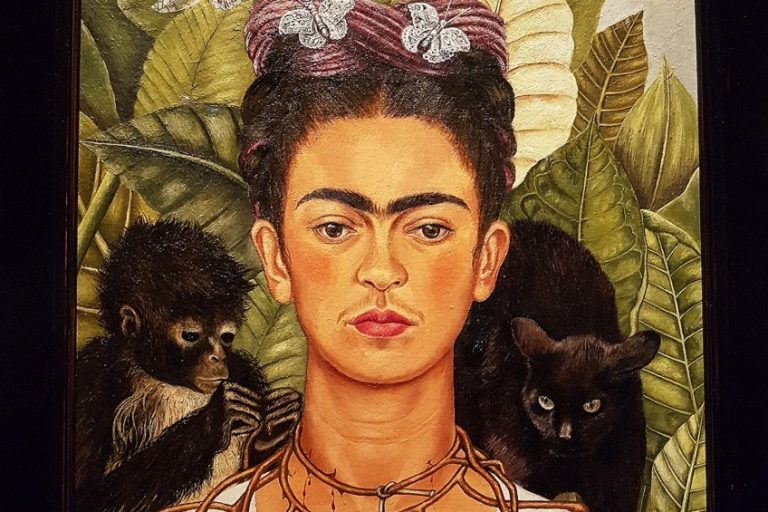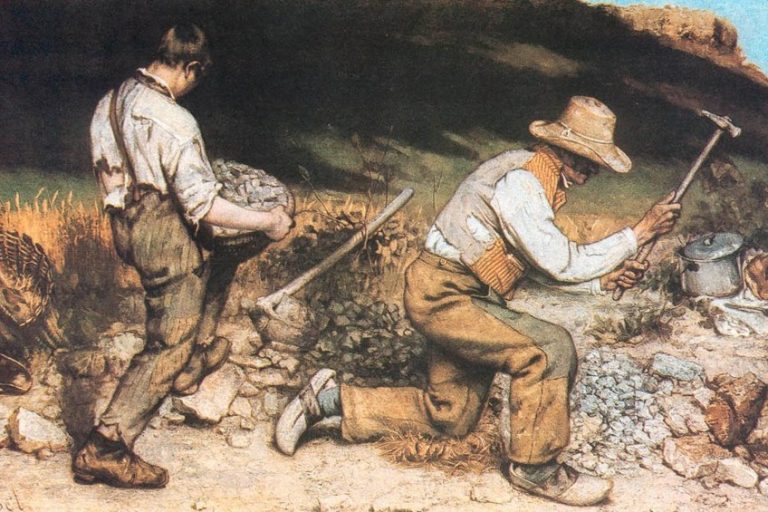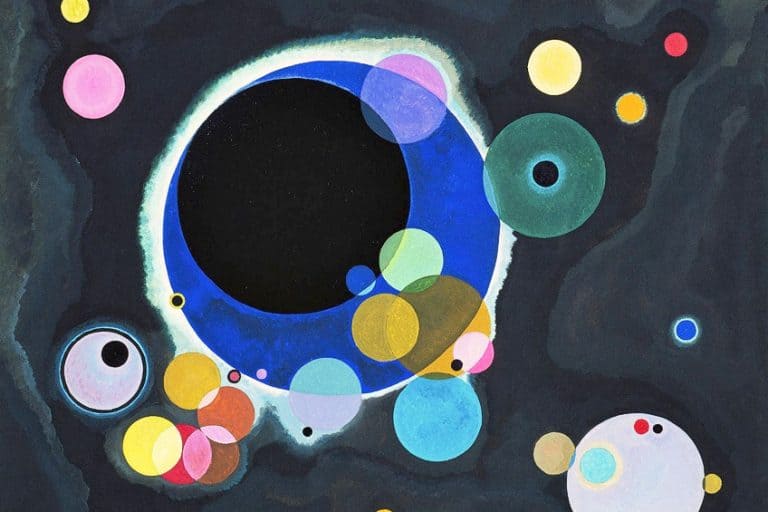Famous Love Paintings – Romantic Depictions of Love in Art
Love is one of those feelings that bring out the muse in most people, therefore, it is no surprise that there are so many examples of love in art. Paintings about love try to capture the essence of that feeling that is simultaneously a very personal yet universal experience. Artists have been inspired throughout the centuries to create paintings of love that are able to convey this feeling to other people. Let’s explore the most famous love paintings that have successfully captured this often fleeting feeling!
Exploring the Most Famous Love Paintings
Art about love can be found all around us, as it is a subject that resonates with so many people, whether they may be looking for love, being in love, or yearning for a love that has passed. There are certain paintings of love, however, that have become so influential in popular culture that they deserve further study and appreciation. Today, we shall be focusing on the finest examples of love in art and see what made these works become so renowned.
By finding out more about the artist and circumstances behind these paintings about love, we shall gain a better understanding of their value and influence.
The Honeysuckle Bower (c. 1609) by Peter Paul Rubens
| Artist Name | Peter Paul Rubens (1577 – 1640) |
| Date Completed | c. 1609 |
| Medium | Oil on canvas |
| Dimensions (cm) | 178 x 136 |
| Current Location | Alte Pinakothek, Munich, Germany |
The Honeysuckle Bower is an artwork filled to the brim with marital symbolism that depicts Rubens and Isabella Brant, his first wife. The composition, exquisite details, and color choices in this artwork clearly illustrate that Rubens was the preeminent artist of the Flemish Baroque period. The pair of lovers are seated in a honeysuckle bower encircled by a garden, both of which are traditional representations of love and often appear in romantic artworks.
Another sign of unity and marriage is the lovers holding each other’s right hands. The artist represented himself resting against his sword’s hilt to indicate his rank as a gentleman.
The oil on canvas painting is now on display in the Munich Pinakothek in Munich, Germany. Over the centuries, the honeysuckle plant has taken on different meanings. The significance that is still linked with the flower started in the Middle Ages. The honeysuckle plant represented the notion of long-lasting pleasure; it also represented perseverance and resilience. This became a common symbol in artworks during Rubens’ lifetime. Around the time the artwork was painted, The Garden of Love was a prominent literary symbol and concept.
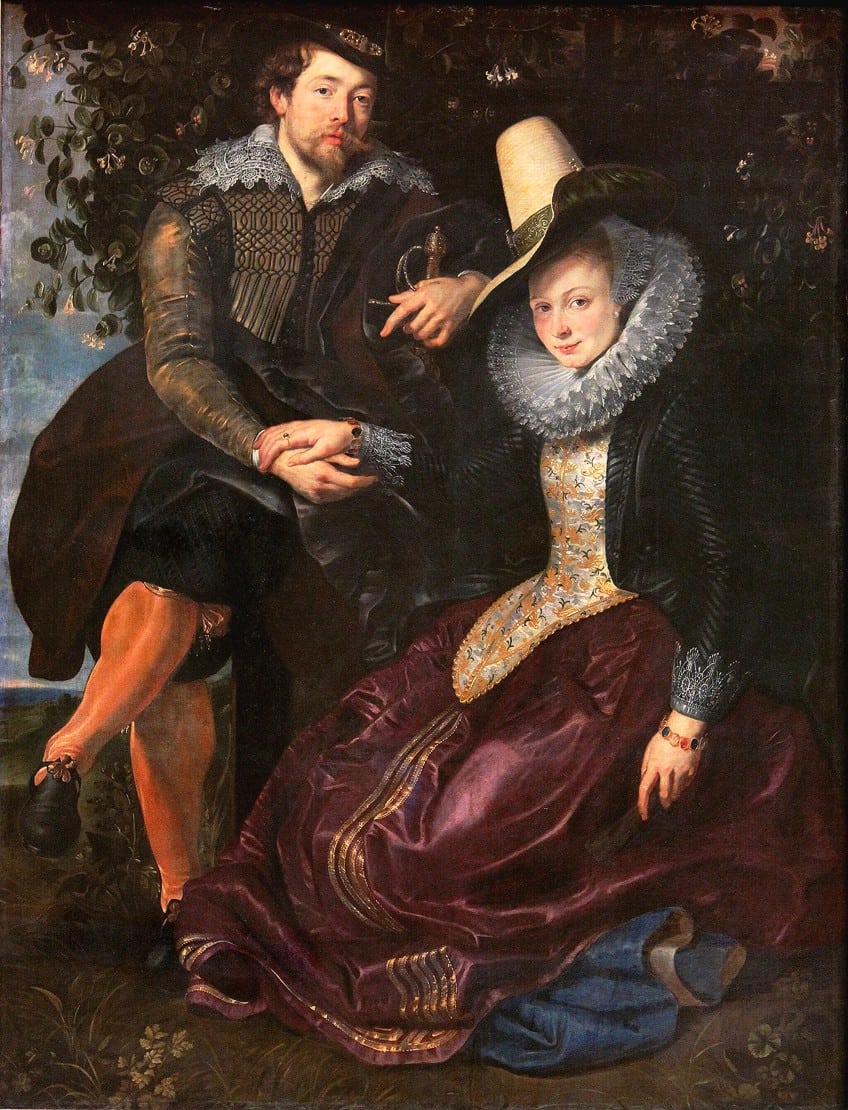
The first inspiration may have stemmed from symbols of paradise seen in cloister gardens from the medieval era. Another factor that might have affected this was Roman de la Rose, in addition to the garden’s importance in aristocratic society. Women are portrayed as objects of adoration by their admirers in these scenes, and the garden is filled with pleasure and music. The two figures’ poses are more relaxed and modest in comparison to the noble clothes they are wearing.
The Jewish Bride (1665) by Rembrandt van Rijn
| Artist Name | Rembrandt van Rijn (1606 – 1669) |
| Date Completed | 1665 |
| Medium | Oil on canvas |
| Dimensions (cm) | 121 x 166 |
| Current Location | Rijksmuseum, Amsterdam, the Netherlands |
During the early 19th century, a Dutch art dealer characterized the subject of the painting as a Jewish father presenting jewelry to his daughter on her wedding day. While the names of the two people are unknown today, most art historians assume they are actually Rebecca and Isaac from the Old Testament. Of course, the picture is not an accurate depiction of a Jewish bride from the Bible, but rather a beautiful, exotic depiction of a cultural ceremony that was outside the experience of a primarily Christian way of life.
Whether or not Rembrandt meant it as a simple work of Biblical art, there is little question that he was expressing an intimate interaction between his two characters.
In line with the contemporary aesthetics of Protestant Reformation Art, as the man lays his hand on her bosom, she moves instinctively to defend her modesty. Nonetheless, both show signs of affection for each other, making this far from a usual seduction scene.

The figures are large but flattened, as they so often appear in his later period, offering a screen for many overlapping brushstrokes of scarlet and gold, the intensity of the colors increasing or decreasing as they pass out of or into the light. Despite the passion and affection, this is not a completely pleasant picture. Maybe because Rembrandt himself was under physical duress in his life and work. Isaac seems to have low expectations, as though he is unsure what the future holds, whilst Rebecca seems contemplative, almost preoccupied.
Lovers Walking in the Snow (Crow and Heron) (1772) by Suzuki Harunobo
| Artist Name | Suzuki Harunobo (1725–1770) |
| Date Completed | 1772 |
| Medium | Woodblock print |
| Dimensions (cm) | 28 x 20 |
| Current Location | The Metropolitan Museum of Modern Art, New York City, United States |
This lover’s print is the most romantic and depressing of all those depicting lovers in ukiyo-e. The artist has effectively shown the close bond of the couple of lovers wandering through the snow, even implying a michiyuki, or route to a romantic suicide. In what is known as an ai ai gasa stance, which literally translates to “sharing the use of an umbrella and love”, the pair strolls beside one another while the snow gently falls.
The creator of the polychrome print, Harunobu, also known as nishiki-e, demonstrates his command of color by depicting the couple’s robes in paired white and black, which are referred to as “crow and heron.”
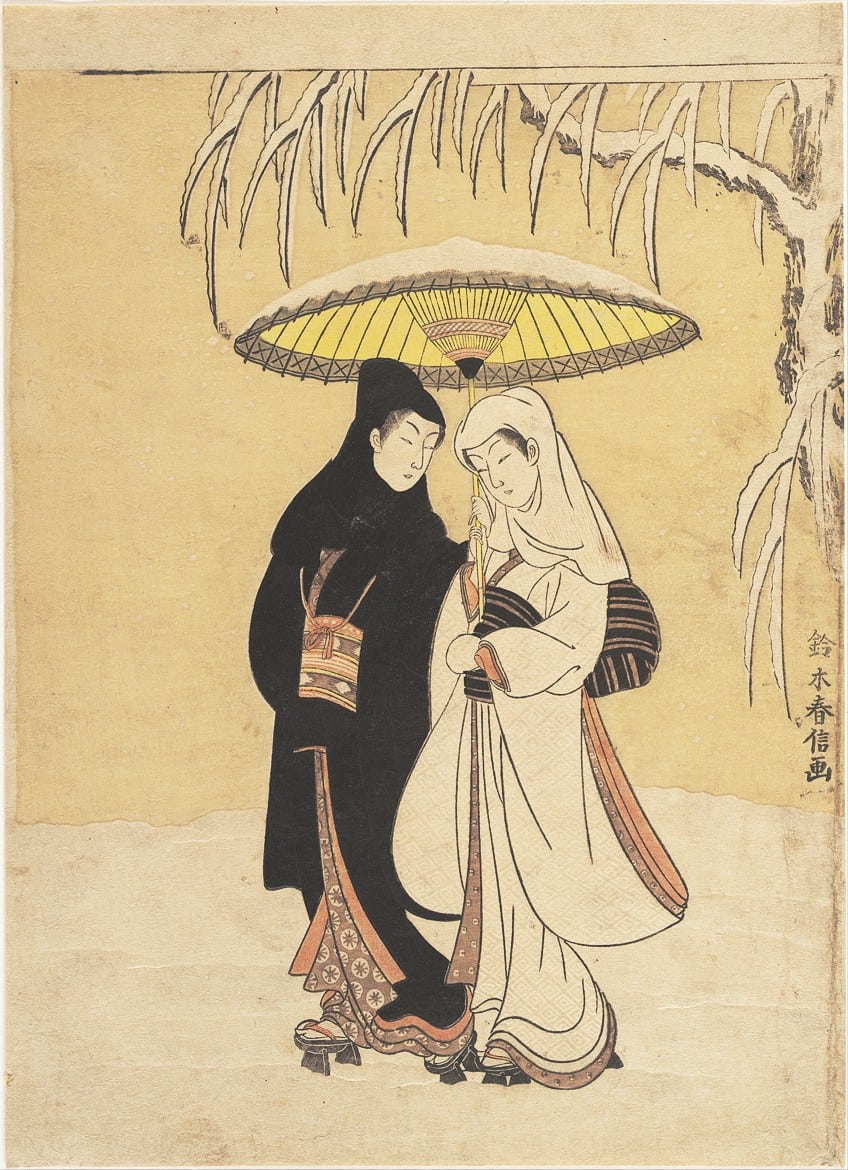
He embellishes the inner robes and the obi of either figure with intricate polychrome motifs in contrast to the basic hues. The woman’s kimono and hood designs, as well as the delicate, flaky texture of the snow, are highlighted by embossing. This print is an early rendition of the design, which was later re-engraved either during Harunobu’s lifetime or shortly thereafter with minor modifications.
The Bolt (1777) by Jean-Honoré Fragonard
| Artist Name | Jean-Honoré Fragonard (1732 – 1806) |
| Date Completed | 1777 |
| Medium | Oil on canvas |
| Dimensions (cm) | 73 x 93 |
| Current Location | Louvre Museum, Paris, France |
In the Rococo period, the painting style evolved into something more flamboyant and energetic, with curved lines, floral patterns, and pastel hues. The new styles and subject matter in paintings echoed the 18th century’s libertine mentality, which focused on the pleasures of the body and hedonism. Artist Jean-Honoré Fragonard was one of its most prominent exponents.
The artwork depicts a decisive moment in a romantic relationship. It portrays a couple in a kind of ecstatic trance, with the male locking the bedroom door.

The thick ruby-colored drapes that fall over the bed intensify the passionate ambiance, with stage lights spotlighting the pair of lovers. Rococo art, which was focused on love, frequently reproduced the same scenic arrangement, where the world and time seemed to halt, depicting a passionate scene of romantic embrace. Fragonard began by drawing sketches of the painting. It is believed that the artwork may have been inspired by literary works of his time and that models were most likely used for the poses. It was said that Boccaccio, Ariosto, and La Fontaine were his inspirations.
The Kiss (1859) by Francesco Hayez
| Artist Name | Francesco Hayez (1791 – 1882) |
| Date Completed | 1859 |
| Medium | Oil on canvas |
| Dimensions (cm) | 110 x 88 |
| Current Location | Pinacoteca di Brera, Milan, Italy |
The painting depicts a medieval couple kissing one other while embracing. It is one of the most intense and vivid depictions of a kiss in Western art history. The woman leans back, as the man extends his left leg in order to support her, resting his foot on the step as if ready to depart at any moment. Although the pair is in the center of the picture, they are unrecognizable because Hayez intended their act of kissing to be at the heart of the arrangement. Shadows lurk in the corner of the left side of the painting, conveying a feeling of danger and conspiracy. Following Napoleonic France’s defeat in the 19th century, the Congress of Vienna convened in 1815 to rebuild the map of Europe.
Italy had a minor role in comparison to other European countries and was set to be partitioned into various states. The Habsburgs either directly dominated or heavily influenced every state. This fragmentation stood against the rising nationalist desire for Italy’s union, resulting in the formation of secret societies with democratic-radical leanings, such as Young Italy and the Carboneria. Francesco Hayez created this artwork during this time period.
Aware of the deadly persecution of the nationalist movement, Hayez chose to hide the concepts of conspiracy and resistance against the invaders as a depiction of historical events. The artist was able to circumvent censorship by using perplexing and ambiguous analogies.
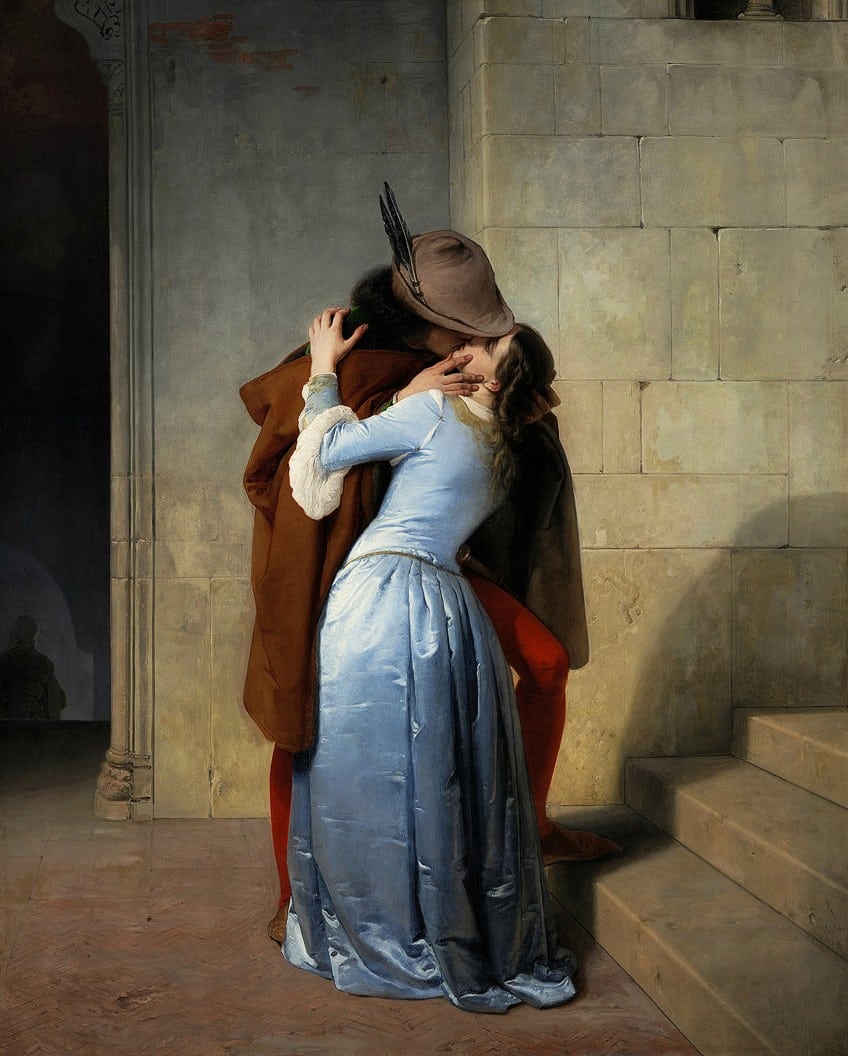
Count Alfonso Maria Visconti of Saliceto commissioned the painting. The Count commissioned Hayez to illustrate the hopes connected to the Kingdom of Sardinia’s partnership with France. Although the immediate focus is a passionate interaction between two lovers shown as medieval characters, the artwork conceals symbolic parallels to Risorgimento Italian nationalist ideas. The man in the artwork is a national patriot who struggled against Habsburg authority following the loss of Italy’s first battle of independence in 1848. This is indicated by a dagger hidden in his robe and the color scheme of blues and reds, which refers to the French flag. In the war for freedom, France sided with Italy, and the work of art was Hayez’s way of expressing admiration to the ally.
Chez le Père Lathuille (1879) by Édouard Manet
| Artist Name | Édouard Manet (1832 – 1883) |
| Date Completed | 1879 |
| Medium | Oil on canvas |
| Dimensions (cm) | 92 x 112 |
| Current Location | Museum of Fine Arts, Tournai, Belgium |
This painting was executed in the bistro Pere Lathuille, which is located near the Clichy tollhouse. Manet’s restaurant was located off the Avenue de Clichy, near the Guerbois. Mile French stepped in for the initial model, Ellen Andree when she had to take some time off from the sittings. M. Gauthier-Lathuille, the proprietor’s son, is the young gentleman in the painting. The young man had met Manet at the restaurant while working as one of the waiters. Manet thought the man was quite pleasant and well-dressed.
In this painting, the young man is portrayed staring lovingly into the eyes of the young woman seated next to him.

The painting depicts a prosperous golden period for the French, with lush plants and striking architecture. The model was portrayed in classically luxurious clothing, displaying French vintage fashion. She’s wearing a hat, lace gloves, and a white fluffy scarf.
Dance in the Country (1883) by Pierre-Auguste Renoir
| Artist Name | Pierre-Auguste Renoir (1841 – 1919) |
| Date Completed | 1883 |
| Medium | Oil on canvas |
| Dimensions (cm) | 180 x 90 |
| Current Location | Musée d’Orsay, Paris, France |
The merchant Paul Durand-Ruel commissioned this work of art in 1882 because he wanted paintings based on the topic of the ball. He purchased it in 1886, first displayed it in April 1883, and continued to care for it until Renoir’s death in 1919. Renoir also produced two complementing paintings on the same topic that year, Dance at Bougival and Dance in the City. The artwork was motivated by the artist’s journey to Italy in 1881, where he drew much influence from Raphael. It demonstrated the development of the artist, who attempted to move away from the Impressionistic style of the time.
The artwork portrays two people dancing under a chestnut tree: the male figure is Paul Lhôte, the artist’s acquaintance, and the lady is Aline Charigot, the artist’s wife.

Both characters are painted life-size and practically take up the entire canvas. However, a table can be seen in the background on the right, as well as the hat on the ground and a couple of faces below the dance floor level. The woman, who is holding a fan in her right hand, is smiling and looking at the observer. The scenario is covered in a bright and positive atmosphere, and the women’s clothing has warm hues like a red hat and yellow gloves
In Bed, the Kiss (1892) by Henri de Toulouse-Lautrec
| Artist Name | Henri de Toulouse-Lautrec (1864 – 1901) |
| Date Completed | 1892 |
| Medium | Oil on canvas |
| Dimensions (cm) | 70 x 54 |
| Current Location | Private collection |
Henri de Toulouse-Lautrec, a post-Impressionist artist, is well-known for his depictions of the beautiful, thrilling, and frequently racy Parisian life of the late 19th century. This piece is no exception: it depicts two ladies in bed in a passionate embrace. Even if people had come to anticipate such displays of sexuality from Toulouse-Lautrec, this kind of situation would have been shocking to audiences of his time as lesbianism was not generally accepted in society.
Toulouse-Lautrec was inspired by the darker sides of Parisian nightlife, such as clubs, cabarets, and brothels. This painting is thought to portray ladies working in a brothel.
Brothels often didn’t have the space to accommodate all of their prostitutes, compelling them to share beds. This often ended in deep friendships and even sexual connections developing between them, which might have been the situation for the two women depicted here by Toulouse-Lautrec.
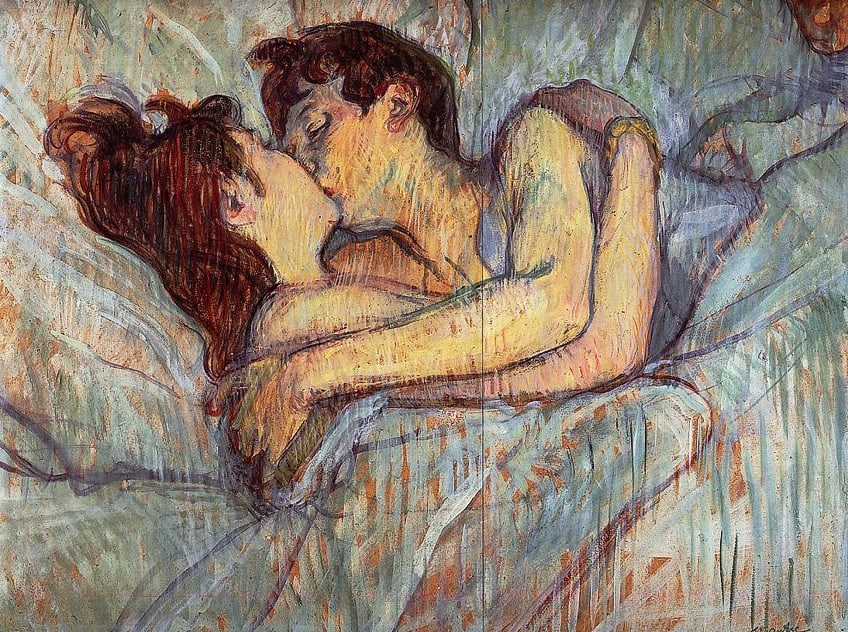
The work of art has received praise for its ability to depict an intense bond between the two, who seem unaware of their artist and unconcerned about the criticisms that their society could pass on them if their relationship were revealed. They are completely immersed in each other, and the observer gets the impression that at the moment recorded by Toulouse-Lautrec, they have no problems other than the time they are spending together. The artwork illuminates the pair with vivid tones of yellow and red, with more subdued shades of blue, gray, and green surrounding them.
The Kiss (1897) by Edvard Munch
| Artist Name | Edvard Munch (1863 – 1944) |
| Date Completed | 1897 |
| Medium | Oil on canvas |
| Dimensions (cm) | 99 x 81 |
| Current Location | Munch Museum, Oslo, Norway |
Munch made multiple paintings in a similar vein, including The Kiss, and displayed them together in a show he named The Frieze of Life. The series’ themes included death, love, sex, anxiety, adultery, jealousy, and the phases of life, as well as the iconic picture The Scream.
Munch never married, and “The Kiss”‘s somber atmosphere reflects Munch’s ambivalence toward romance. It’s nearly hard to tell the two characters apart, especially when their features meet and merge in the artwork.

According to Reinhold Heller, the art historian, the representation of the lovers represents their oneness while also foreshadowing a dangerous demise of individuality, an erosion of one’s own identity and existence that alludes to death. This topic is represented by four different woodcuts. The Kiss I and The Kiss II were among Munch’s first woodcuts, originally released in 1897. The Kiss III debuted in 1898, followed by The Kiss IV in 1902. The artist adjusts the details of the backdrop in each example by employing different blocks that have been slightly adjusted.
The Birthday (1915) by Marc Chagall
| Artist Name | Marc Chagall (1887 – 1985) |
| Date Completed | 1915 |
| Medium | Oil on cardboard |
| Dimensions (cm) | 80 x 99 |
| Current Location | Museum of Modern Art, New York City, United States |
Marc Chagall referred to the word “love” as the primary color in his works of art. Bella, his wife, was the main source of affection in his life. They first met while Bella was still a teenager in Vitebsk, Belarus. Despite the disapproval of her parents, who desired a better marriage for their daughter, Chagall married Bella in 1915. Chagall created this piece in 1915, only a few weeks before he married Bella.
It is a great depiction of these two’s incredible, flowing, and overpowering love. Chagall is seen hovering above Bella, floating in a dreamlike state.
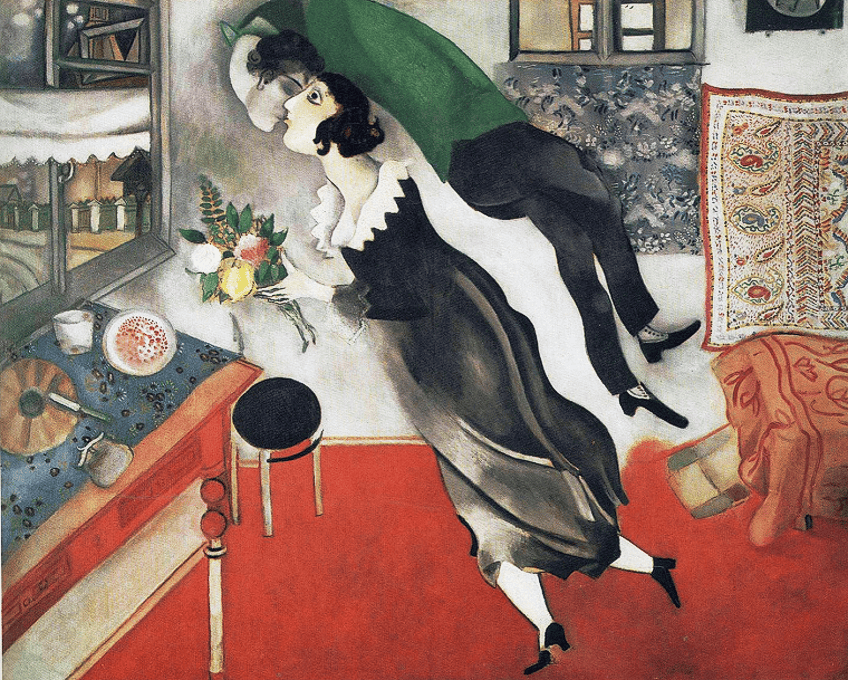
As he bends around to kiss his future wife on the lips, his head is unnaturally craned upside down and backward. Bella is shown carrying a bouquet of flowers and posed as if about to take flight. In a bright living room environment dominated by a vibrant red carpet, the pair is suspended in loving ecstasy. The beige, ivory, and tans of the furniture and wall decorations of the living room complement the artwork. The painting is a magnificent work of art that vividly communicates the sensation of ecstatic love between young lovers in a pleasant yet ordinary scene that appears to exude happiness from every square inch of the work of art.
Frieda and Diego Rivera (1931) by Frida Kahlo
| Artist Name | Frida Kahlo (1907 – 1954) |
| Date Completed | 1931 |
| Medium | Oil on canvas |
| Dimensions (cm) | 100 x 78 |
| Current Location | San Francisco Museum of Modern Art, San Francisco, United States |
Frida represents herself as small and insignificant in comparison to her huge husband portrayed with his palette. This represents not just their physical differences, but also a self-portrait as a wife in the shadow of a renowned artist. The strange power balance that one can observe inside this artwork is potentially disconcerting. Kahlo seems to be portraying that she is only a little part of her husband’s life and that he has to be independent.
Her relative stature is likewise exaggerated to emphasize the power disparity. Her own creative accomplishments and traits are overlooked in this work, with the sole artistic references alluding to her new spouse.
Kahlo met 42-year-old Diego Rivera, a famous artist, and revolutionary leader, in 1928. He recognized her artistic talents and the two of them married the next year. The couple then relocated to Cuernavaca. Kahlo started to be impacted by traditional Mexican culture there, both in her work and her clothing. Their tumultuous relationship would go on to influence much of Kahlo’s art.
Figures on a Beach (1931) by Pablo Picasso
| Artist Name | Pablo Picasso (1881 – 1973) |
| Date Completed | 1931 |
| Medium | Oil on canvas |
| Dimensions (cm) | 195 x 130 |
| Current Location | Picasso Museum, Paris, France |
In the summer of 1931, Picasso created a series of weird sexual beach images, including this one, in his French Riviera holiday resort of Juan-les-Pins. The grotesque character of the portrayed shapes said to be motivated by the artist’s affair with Marie-Therese Walter, a 19-year-old model, reduced this moment of intimacy to a kind of crudity, arguably more indicative of his worsening relationship with his wife, Olga. The two figures’ praying mantis-like heads were popular with Surrealists because the twisted thought of the female bug consuming her husband after intercourse imparted another visual representation of the ‘life and death’ dilemma.
Picasso’s grotesque vagina dentata teeth visuals, as well as penile tongues, are included in these heads.
The indirect and satirical allusion to classicism is balanced by parallels to modern Surrealist painting, particularly the monster figure paintings of Salvador Dali and Joan Miro, both of whom were masters of the grotesque like Picasso. This artwork may have been influenced by the paintings of both Surrealists, but the connections with Dali are arguably more striking. This artwork’s reductive and simplified style is a far cry from Dali’s pseudo-academic polish, illusionistic tricks, and miniaturist focus on detail, however, Picasso would have been open to the absurd pairing of ridiculous psychoanalytical imagery with a seemingly traditional style.
With that, we wrap up our list of the most famous love paintings. From the 1600s all the way to the 1930s, these examples of art about love range from the beautiful to the bizarre. Some of these paintings about love represent an innocent and sweet kind of love, while others seem to be more about lust and infatuation. As we can see, love in art can be expressed in a multitude of different ways. Which would you say is your favorite painting about love?
Take a look at our love paintings webstory here!
Frequently Asked Questions
Why Do Artists Create Paintings About Love?
Throughout the years, artists have sought to capture the most fundamental of human emotions, and love is no doubt one of the strongest emotions that humans can experience. Artists are able to depict the feeling of love by using certain colors and poses that remind one of the beauty and level of affection that people experience when they are in love. Each artist manages to portray that special feeling in a unique way, using the preferred techniques and styles that they are so renowned for. Today, we have an abundance of art about love all around us, from Hallmark cards to magnificent works of art, and each offers a unique look at the various aspects of being in love.
What Are the Most Famous Love Paintings?
Throughout the history of art, countless amazing artworks about love have been produced. Despite this seemingly endless array of works to choose from, there are a few that have stood out from the rest and have gained a reputation through the following centuries or decades. An early example of such an artwork is The Honeysuckle Bower (c. 1609) by Peter Paul Rubens. This artwork is said to be loaded with symbolism related to marriage. A rather modern depiction of love is Picasso’s Figures on a Beach (1931), which illustrates the artist being intimate with a 19-year-old model.
Isabella studied at the University of Cape Town in South Africa and graduated with a Bachelor of Arts majoring in English Literature & Language and Psychology. Throughout her undergraduate years, she took Art History as an additional subject and absolutely loved it. Building on from her art history knowledge that began in high school, art has always been a particular area of fascination for her. From learning about artworks previously unknown to her, or sharpening her existing understanding of specific works, the ability to continue learning within this interesting sphere excites her greatly.
Her focal points of interest in art history encompass profiling specific artists and art movements, as it is these areas where she is able to really dig deep into the rich narrative of the art world. Additionally, she particularly enjoys exploring the different artistic styles of the 20th century, as well as the important impact that female artists have had on the development of art history.
Learn more about Isabella Meyer and the Art in Context Team.
Cite this Article
Isabella, Meyer, “Famous Love Paintings – Romantic Depictions of Love in Art.” Art in Context. July 25, 2023. URL: https://artincontext.org/famous-love-paintings/
Meyer, I. (2023, 25 July). Famous Love Paintings – Romantic Depictions of Love in Art. Art in Context. https://artincontext.org/famous-love-paintings/
Meyer, Isabella. “Famous Love Paintings – Romantic Depictions of Love in Art.” Art in Context, July 25, 2023. https://artincontext.org/famous-love-paintings/.




